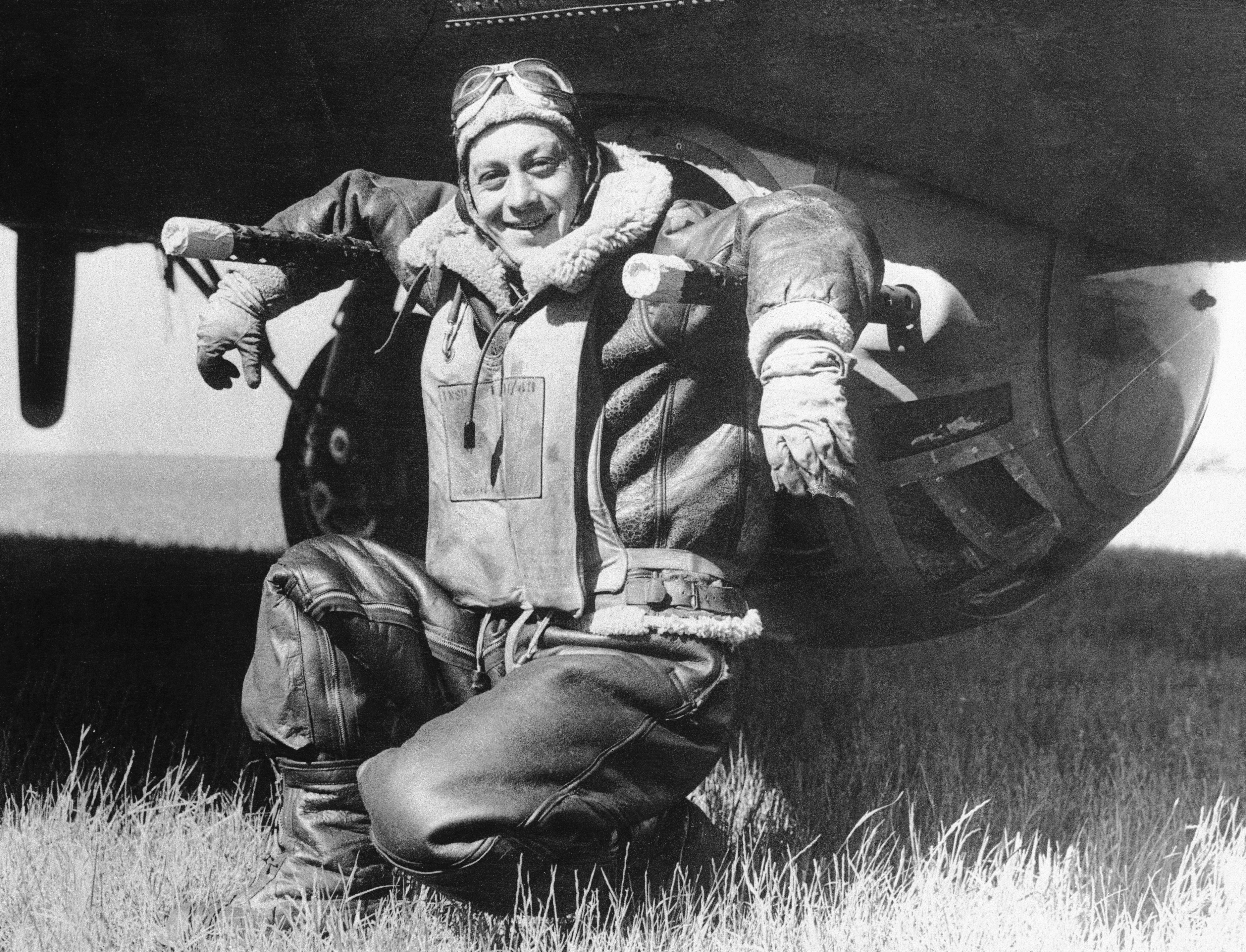Who says a hero has to be likable?
HEROES DON’T ALWAYS come in a perfect package, and sometimes even the most imperfect person can rise to the occasion when it matters most. Take Sergeant Maynard H. Smith, who risked his life to save six fellow crewmen from certain death in their stricken bomber. He was far from the “typical American hero folks picture,” said one who met him, but his courage was undeniable, and he endures as perhaps the most unlikely of the war’s 464 Medal of Honor recipients.
Smith’s early life gave no hint of the heroics that lay ahead. He was born in 1911 to an affluent family in Caro, Michigan. His father, Henry, was an attorney and later a judge. Young Smith was a handful, engaging in what the local press called “harum-scarum exploits” like riding a horse through a drugstore and wrecking his dad’s Buick by crashing it into a horse and buggy. To tame his son, Henry sent him to the Howe Military Academy in Indiana. After graduation, Smith married and worked for the U.S. Treasury Department and the Michigan Banking Commission.
In 1934, Smith’s father died unexpectedly, leaving his son a sizable inheritance. Smith quit his job and lived off his father’s money. The idle lifestyle didn’t shame him. If you can afford it, why not?, he reasoned.
When war came in 1941, Smith, now divorced and a father, was in no rush to serve. He had a pleasant life, spending winters in Florida and summers in Michigan, and he didn’t see himself as “particularly pugilistically inclined.” The draft forced his hand, however, and he enlisted in the army on August 31, 1942, one step ahead of his induction notice. (Some accounts, perhaps apocryphal, insist that an irate Michigan judge gave Smith the choice of jail or the army for failing to keep up with his child support payments.)
Privates take orders from everyone. Smith didn’t like that, so he volunteered for aerial-gunnery school because it was the quickest way to make sergeant. He completed training in Harlingen, Texas, and in April 1943 was sent as a replacement gunner to the 423rd Bombardment Squadron of the Eighth Air Force’s 306th Bomb Group in Thurleigh, England.
There, Smith had trouble fitting in. He was 31, significantly older than most of the enlisted men and many of the officers. He was a child of privilege among men hardened by the Depression, and he was smaller than most. In the words of 24-year-old Stars and Stripes correspondent Andrew A. Rooney (better known many years later as the curmudgeonly commentator on the TV show 60 Minutes), his fellow airmen saw him as “a moderately pompous little fellow with the belligerent attitude of a man trying to make up with attitude what his five-foot-four, 130-pound body left him wanting.” His army comrades gave him the nickname “Snuffy,” after short, shiftless, and gleefully obnoxious Snuffy Smith, a character in the “Barney Google” comic strip. Smith, for his part, viewed most of the other airmen as “people that I had no interest in but was forced to associate with simply because I was in the army.”
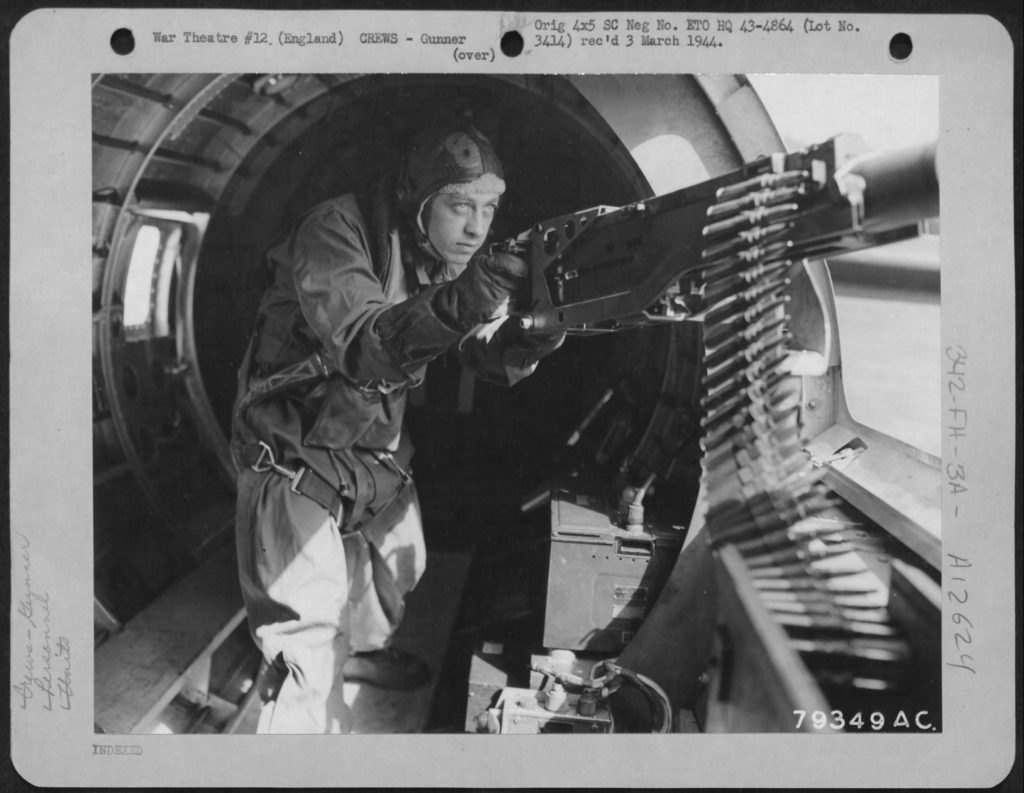
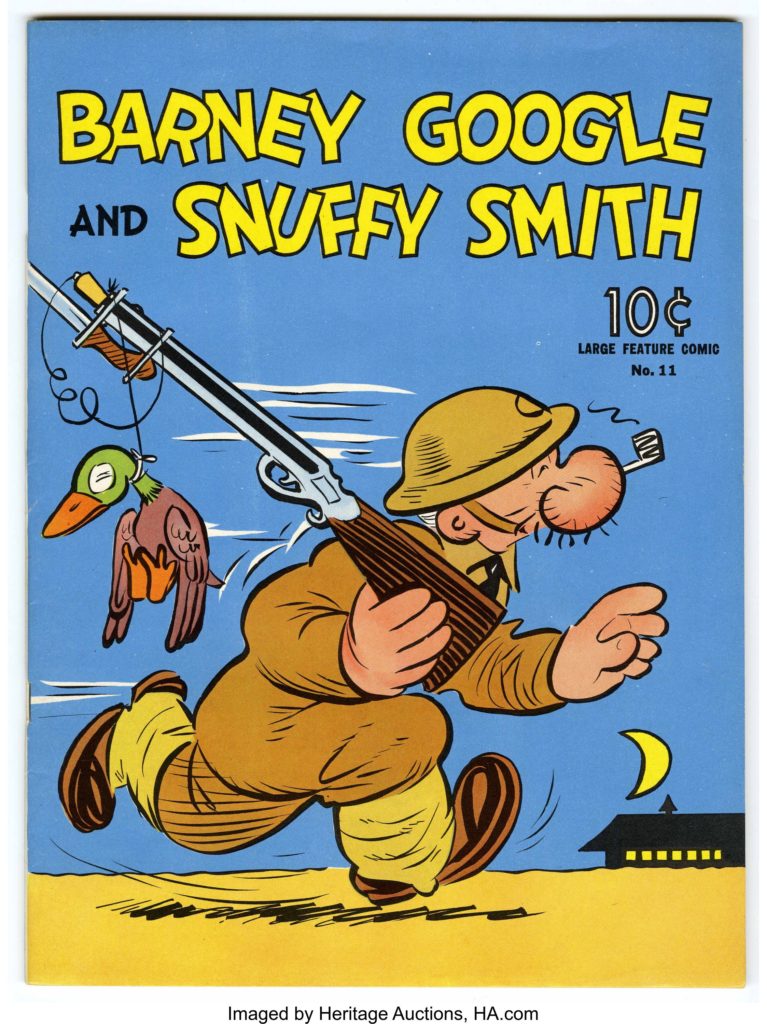
SMITH FLEW HIS FIRST MISSION on May 1, 1943, as a ball-turret gunner on a B-17F Flying Fortress known by the last three digits of its tail number, 649. The pilot was First Lieutenant Lewis P. Johnson Jr., 21, flying the 25th—and last—mission of his tour. The target was the German U-boat pens at Saint-Nazaire, France.
At about 9 a.m., 78 B-17s from the 306th Bomb Group and three other groups took off from England, dropping their 2,000-pound bombs over cloud-covered Saint-Nazaire at 11:26 a.m. Enemy flak was ineffective and, wrote mission leader Lieutenant Colonel Claude E. Putnam in his after-action report, German fighter planes “did not attack with any determination.” It was shaping up as one of the easier missions the 306th had flown lately; all that was left was the trip home to England.
At about 1:40 p.m., the lead navigator brought the formation, flying under 1,000 feet, over what he thought was Land’s End, England. The airmen were puzzled by what looked like lights blinking at them from below—then shocked when flak began bursting around them. The navigator had made a serious error, later blamed on a faulty compass. What he thought was the tip of England was actually heavily defended Brest, France. The Germans hit the bombers with antiaircraft batteries, coastal artillery, and machine-gun fire, blowing three of the 306th’s ships out of the air within minutes. The squadron made a sharp turn to escape and encountered 20 Focke-Wulf 190 fighter planes. This time, wrote Putnam, the fighter attacks were “determined and pressed home.”
Smith’s plane, flying on the outside of the formation, was one of the more vulnerable aircraft. From his station in the ball turret below the plane, Smith saw tracers zip toward his ship and heard a terrific explosion above him: “‘Whoomph,’ just like that,” he said. The hit knocked out the plane’s interphone system and broke the hydraulic lines to the ball turret’s controls. Unable to communicate with anyone, Smith manually cranked the turret around, opened the hatch, crawled into the plane’s waist section, and got what war correspondent Homer Bigart called his “initiation into hell.”
There was a wall of flame toward the front of the plane by the radio room and also a raging fire by the tail section. Those up front—pilot Johnson, copilot Robert McCallum, and the navigator, bombardier, and top-turret gunner—knew only that the rear of the plane was an inferno. McCallum said they doubted they had even “a snowball’s chance in hell” of getting back to England.
The radio operator, a veteran of 22 missions, bailed out, and the two waist gunners were preparing to do the same. Smith helped one free a parachute strap that had become caught. “Just for a joke I asked him if it was warm enough for him, but he didn’t see the point,” Smith recalled. “He said he was getting out and he did.”
The smoke and fumes were thick. Smith wrapped a sweater around his head so he could breathe, grabbed a fire extinguisher, and attacked the fire near the radio room. A few minutes later, he glanced over his shoulder and saw badly wounded tail-gunner Roy Gibson painfully crawling through the flames. Gibson had been hit in the back; Smith deduced that his left lung had been pierced. He gave Gibson a shot of morphine and lay him on his left side so he wouldn’t bleed into his good lung. When Gibson asked if they were almost home, Smith fibbed and said they were.
Smith went back to the radio-room fire. When the fire-extinguisher fumes choked him, he moved toward the tail and attacked the fire there. And when German fighters targeted the crippled bomber, Smith dropped his fire extinguisher and shot at the attackers with the left waist gun and then with the right waist gun. “You had to show those babies that you mean business or [they] finish you off real quick,” he explained later.
Smith threw out burning debris that was fueling the fire, a process made easier by the gaping holes now in the side of the fuselage. The ammunition cans were difficult to discard because, at 98 pounds, they weighed almost as much as Smith did, but he managed to do it.
Once the fire extinguishers were exhausted, Smith threw the contents of water bottles at the flames and even urinated on the fire. He beat the flames with his feet and his gloved hands until his clothing smoldered, and by the time the ship neared the English coast shortly after 3 p.m., the fires were out. Johnson landed the plane, nearly burned through at the middle and breaking in half on touchdown, at Predannack airfield on the southwestern tip of England. Relieved that his tour was over, the pilot noted in his after-action report: “This is a hell of a way to finish.”
Overall, the mission had been a costly one. Ninety-three airmen were killed, wounded, or missing. Seven planes were lost and 22 were damaged, two beyond repair.
Aboard Smith’s B-17 it had been a 90-minute ordeal of courage, persistence, and ingenuity that “read like an improbable movie thriller,” as International News Service correspondent Bob Considine noted. Smith had saved his ship and its crew. All seven men who had stayed with the plane survived, including tail-gunner Gibson, who jokingly demanded his Purple Heart as he was carried off the plane. The three men who had bailed out were never seen again, presumably drowning in the English Channel. The plane was a total loss, going directly to salvage.
Smith’s exploits became the talk of Thurleigh. The officer debriefing the crew after the mission immediately recognized Smith’s “many incidents of great and unusual bravery and skill” on the flight. Johnson, who would be awarded a Silver Star for the mission, submitted an affidavit attesting to Smith’s acts, “performed in complete self-sacrifice and the utmost efficiency,” and crediting Smith with being “solely responsible for the return of the aircraft and lives of everyone aboard.” On May 17, 1943, the New York Times reported that Smith would likely receive the nation’s highest decoration, the Medal of Honor. He would be only the second man in the European Theater to win the high honor, and the first to live to wear it.
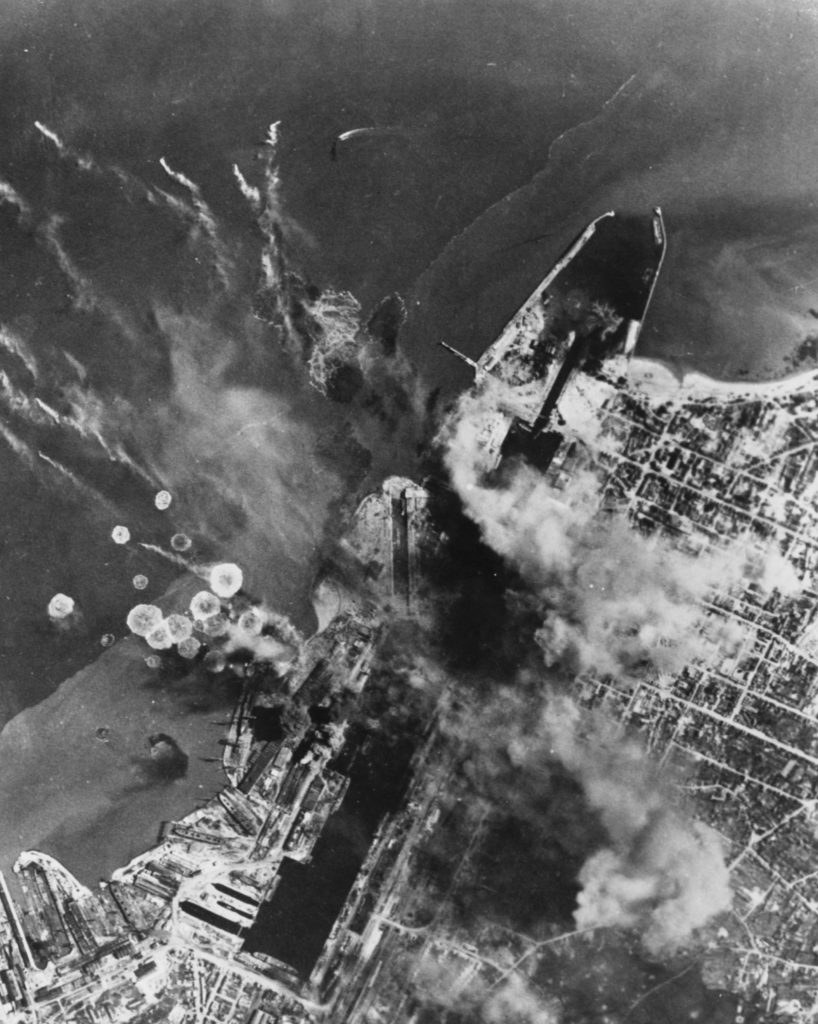
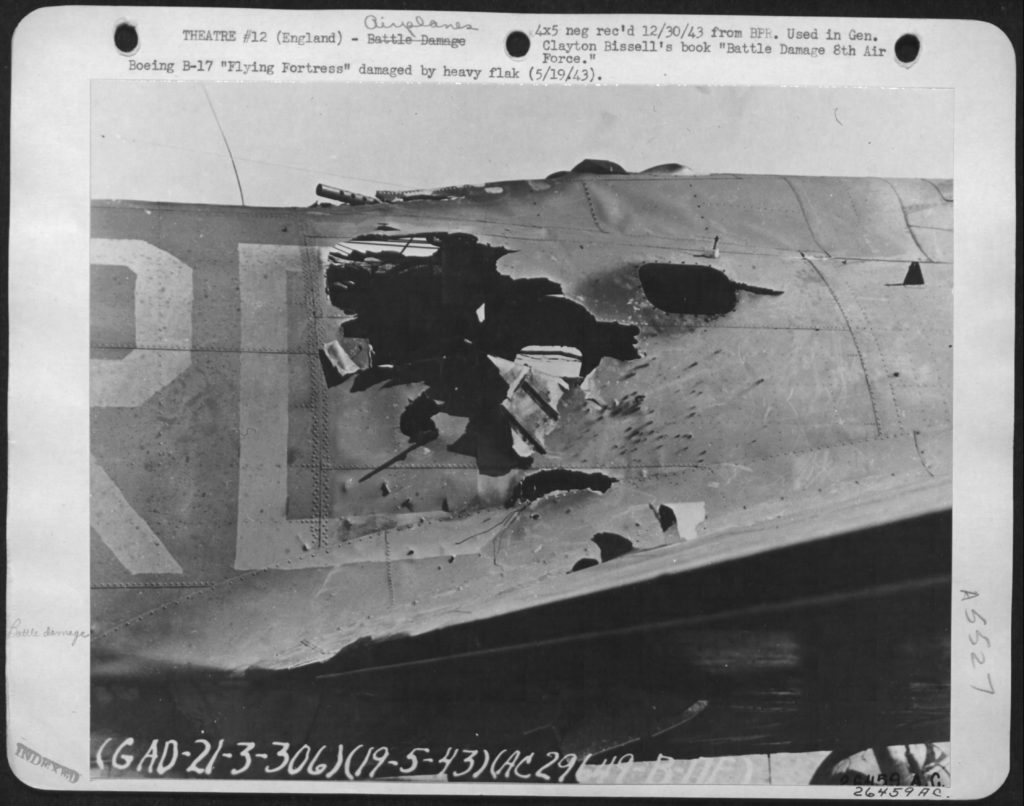
THE AWARD CEREMONY took place at Thurleigh on July 15, 1943, and the Eighth Air Force went all out. Secretary of War Henry L. Stimson flew in from Washington, D.C., carrying Smith’s medal in his pocket, and the guest list included seven generals, two radio networks, an air force band, and a busload of reporters. There was just one problem: no Smith. A frantic search found him toiling in the mess-hall kitchen—a punishment for twice returning late from leave.
In the shadow of a battle-scarred Flying Fortress, Stimson hung the Medal of Honor around Smith’s neck. Major General Ira C. Eaker, commander of the Eighth Air Force, praised the sergeant for staying with his plane “after others—more experienced than he—had given up.” Standing at attention, Smith nervously moistened his lips and clenched his fists; a reporter observed that he seemed to be trying “to dispel his usually glum expression with one of pleasant sternness.” The 12-minute ceremony ended with 18 B-17s rattling the base with a low-altitude fly-over. Smith was now the big man on campus, and he knew it. When a reporter asked his plans for the evening, he replied with a smile that although he didn’t have a pass, “I think I can arrange for one.”
The medal gave Smith only a $2 pay raise, to $174.80 a month—but an enterprising war hero could write his own ticket. While most airmen rose at or before dawn, Smith slept in, sometimes until 10 a.m., and he reveled in being a celebrity, handing out autographs with the “cooperative air of a brand-new picture star,” a writer from the New Yorker observed.
He was the only one of the 15 men in his quarters to have his mail delivered to his doorstep, and instead of having to get around by foot or bicycle, he used MPs as chauffeurs. He was treated, his superiors later admitted, “with a deference and patience which would not be accorded any other subordinate officer or enlisted man.”
Smith went on to fly five more missions and was believed to have downed a FW-190 over Wilhelmshaven, Germany, on June 11, 1943, before being grounded for “operational exhaustion”—today called posttraumatic stress disorder. Pilot Johnson believed the May 1 mission had been “a very traumatic experience for Maynard,” with effects “profound and long lasting.” Smith was assigned to office work at Thurleigh in personnel and operations.
Smith kept his distance from the other airmen, preferring to spend his free time at a pub in nearby Bedford, chatting with, the New Yorker reported, the “more contemplative English friends he has made there.” At a dance in Bedford, he met Mary Rayner, a 19-year-old USO hostess. They were married on July 15, 1944, the first anniversary of the Medal of Honor ceremony. Smith chose the bride’s uncle, not a fellow flier, as his best man.
The privileges Smith was given—or took—grated on the other men. Matters came to a head in late 1944 when Major Thomas F. Witt, the 306th’s operations officer, recommended Smith be demoted to private because of what Witt called poor job performance—a humiliating slap in the face for a Medal of Honor recipient. Calling Smith’s attitude “insufferable,” Witt said Smith showed “no responsibility to his duties, or to his officers and fellow NCOs.” He often wasn’t available when needed, Witt wrote, and “repeated warnings and reprimands have been a necessity” to get any work from him. On December 17, 1944, the air force busted Smith, who angrily called his demotion “the rotten deal that lousy outfit gave me via the great judgement of Witt, and some of his cohorts.” That same day, a medical review board permanently grounded him, and on February 2, 1945, he was sent home to the States, ending what 306th historian Russell A. Strong called “a long and somewhat touchy relationship between those in command and Smith.”
While he may have been less-than-popular at Thurleigh, Smith was still a hero in Michigan. On March 22, 1945, his hometown of Caro welcomed him back with a gala parade, featuring Governor Harry F. Kelly, high-school marching bands, and the “Congenial Four,” Caro’s barbershop quartet. A local newspaper described how the townsfolk, chortling as they recalled the “hair-raising stunts” of his youth, presented him with a “fine gold Hamilton wristwatch.” Smith’s childhood buddy, Jim Sparling, had to chuckle. When he and Smith had left Caro for the army three years earlier, Smith had vowed never to return unless the town threw him a parade.
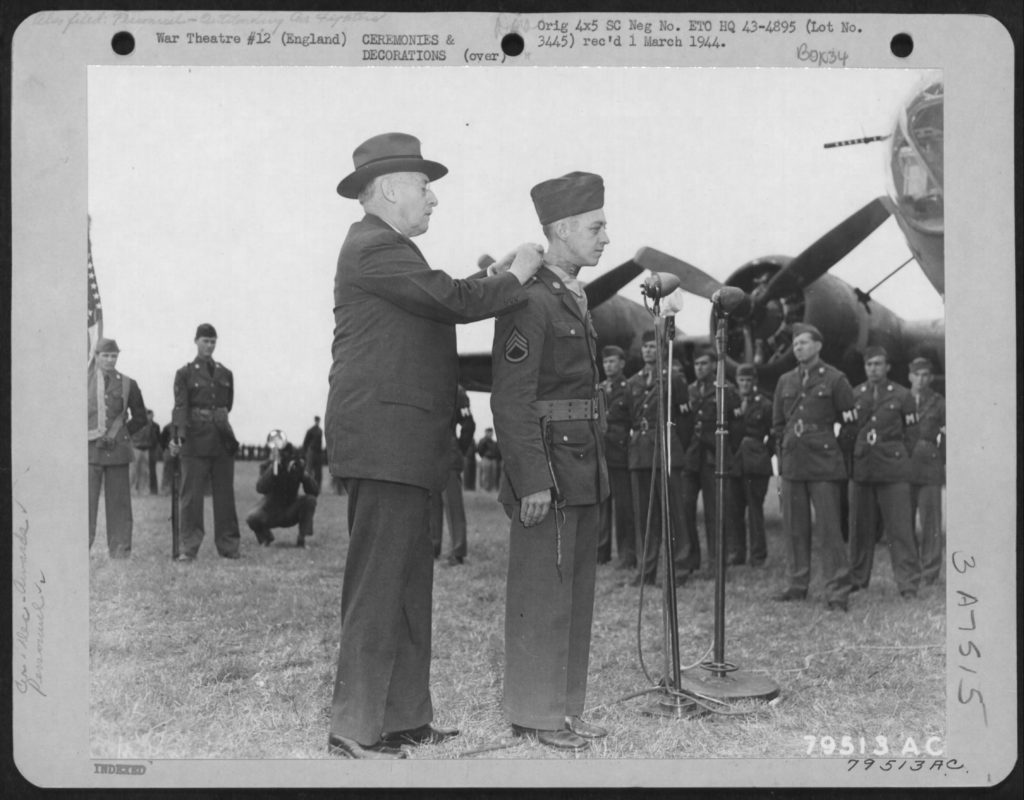
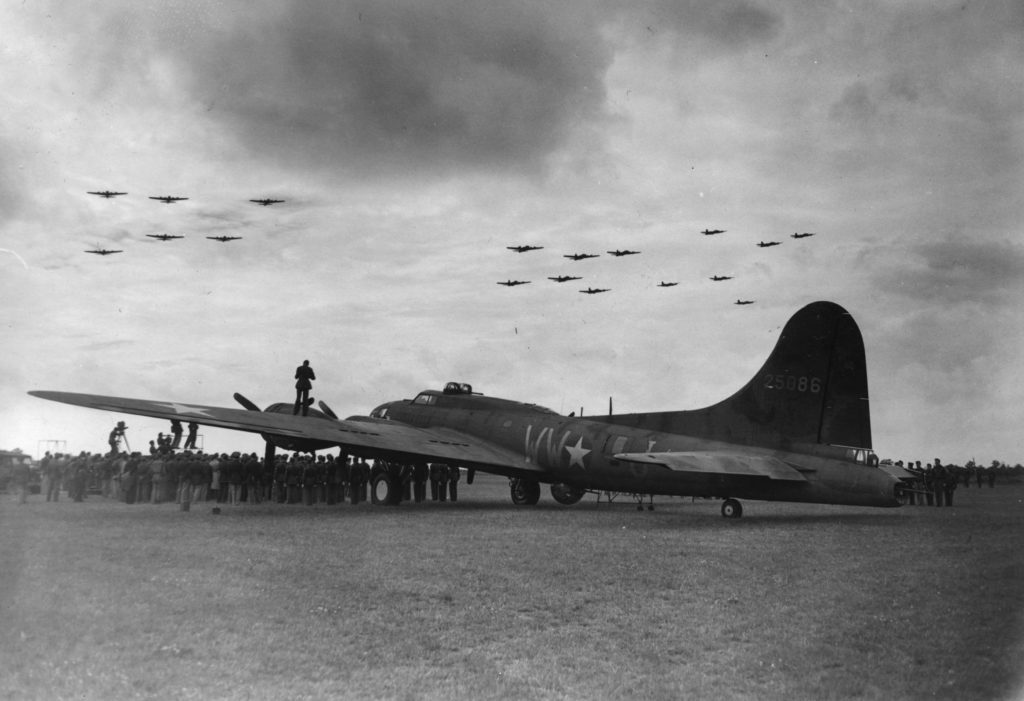
AFTER SMITH WAS DISCHARGED on May 26, 1945—a process accelerated by his Medal of Honor—he and his wife settled in Washington, D.C., where he worked for a time for the Internal Revenue Service. He was bitter toward his years in the service. “To be honest, I can’t say as I care to be reminded of the experience,” he wrote to a friend shortly after the war. “It was just so much time of my life wasted.” His “long awaited pleasure,” he told his friend, was encountering former officers from Thurleigh. “I certainly let them have the works, after, of course, they greeted me with that piss willy officer line of BS.” When Pentagon officials called with interview requests, he said, “they don’t call the second time when I get through putting them in their proper place.”
Like it or not, though, he remained a public figure and his missteps continued to be news, as Smith soon learned.
He had fallen behind on $15-per-week child-support payments to his ex-wife, and in 1946, she obtained an extradition warrant from Michigan governor Kelly, who had honored Smith in Caro just a year earlier. A Washington, D.C., judge refused to send Smith back to Michigan after Smith promised to bring his payments up to date. “Extradition of Smith, War Hero, Is Refused In Non-Support Case,” read the headline in the Washington, D.C., Evening Star.
Two years later, Smith got in trouble for peddling “Firmo,” a potion guaranteed to restore “lost manhood.” The Food and Drug Administration called it a quack remedy, not an aphrodisiac, and seized more than 500 jars of it from Smith’s Washington apartment. He received a suspended sentence for false advertising. “Salve Puts War Hero in ‘Jam,’” asserted a front-page headline in the Detroit Free Press.
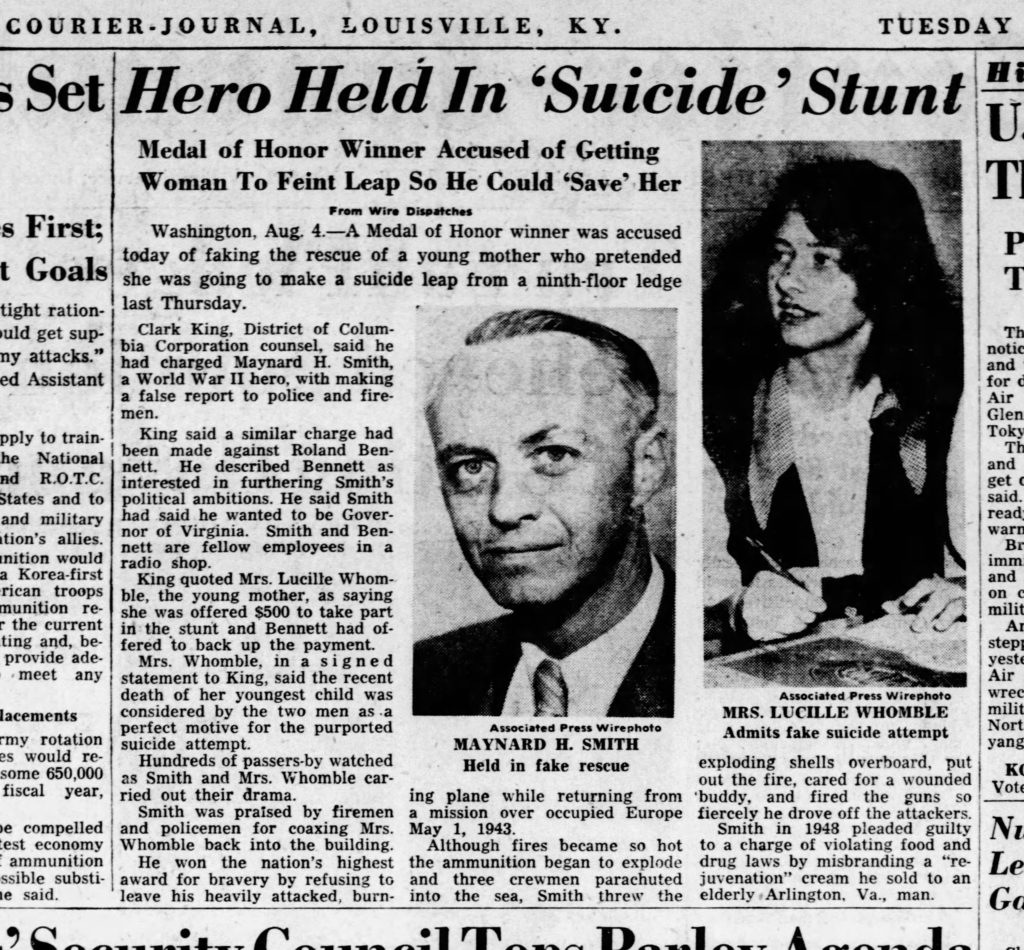
In 1952, Smith again made news, this time for an apparent new act of heroism. On July 31, he dramatically rescued a distraught 21-year-old woman from the sixth-story ledge of the YWCA building in Washington before hundreds of onlookers, the press reported. “Medal-of-Honor Man Saves Young Mother from Suicide Plunge,” the Evening Star proclaimed. It seemed too good to be true, and it was. The woman on the ledge, Ernestine Lucille Whomble, later told police that Smith had had a buddy offer her $500 in cash to climb onto the ledge so Smith could swoop in and rescue her. He was toying with a run for governor in Virginia and needed to freshen his resume. “War Hero Held in Hoax,” the New York Times announced upon Smith’s arrest. He was convicted of filing a false police report and sentenced to 10 days in jail.
In 1956, Smith’s mother, Mary, died. She left him an inheritance, allowing him and his wife to live comfortably, and he kept out of the headlines. As the years passed, Smith, now retired in Florida, mellowed toward his time in the service. He attended veterans’ reunions and became a regular at VFW posts near St. Petersburg. He even reached out to his former comrades, asking a reporter to publish his address and “tell those lucky bastards who knew me in WWII to write old Snuffy.” As he aged, he began to exaggerate deeds that needed no embellishment. Not only had he extinguished the fire in his crippled plane, but he falsely claimed he had taken over for the critically injured pilot and flew the plane back to England, even though he had never flown before. He died of heart failure on May 11, 1984.
Maynard “Snuffy” Smith wasn’t central casting’s idea of a hero. “You would never think, to look at him, that [he] is a dashing soldier, an intrepid airman,” Time magazine noted back in 1943. He had his share of human frailties, but “some of us will like him all the more because he isn’t too good for human nature’s daily food,” said the New York Times at the height of Smith’s fame. Whatever his faults and shortcomings, Smith’s bravery on May 1, 1943, however unforeseeable, earned him a lasting place in the pantheon of America’s bravest. ✯
This article was published in the February 2020 issue of World War II.

